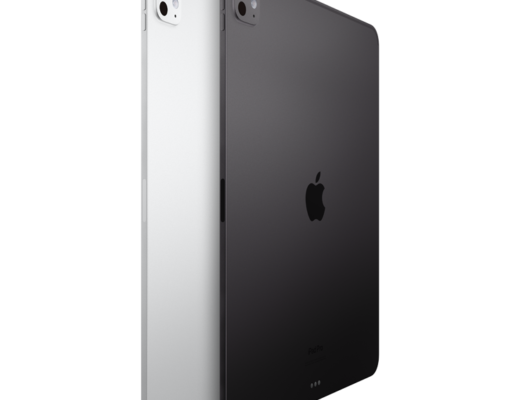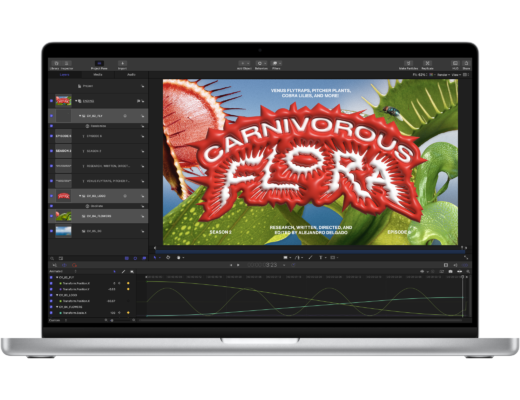It is indeed the week of Macintosh as today Apple introduced new M4-powered MacBook Pros. This follows on the heels of new M4 iMacs and a newly redesigned M4 Mac Mini. This looks to be a big M4 update as the form factor of the MacBook Pro looks to be pretty much the same.
The MacBook Pro will be available with one chip more than the new Mac mini, as the MacBook Pro will get an option for an M4 Max. In fact, if you go for the 16″ MacBook Pro, your choices of chip are between the M4 Pro and the M4 Max, as the entry-level M4 chip is not available with the 16″ MacBook Pro.

Seeing that the M4 Max isn’t available with the new Mac mini got me wondering what exactly is the difference between a M4 Pro and an M4 Max? The easiest way I’ve seen to compare them side-by-side is to head to the MacBook Pro Tech Specs page. That way you can see the features listed side-by-side.
There were a couple of bullet points noted in the performance discussion of the new M4, M4 Pro and M4 Max chips that were specific to the video and post-production world:
- Up to 10.9x faster 3D rendering in Blender when compared to the 13‑inch MacBook Pro with Core i7, and up to 3.4x faster when compared to the 13‑inch MacBook Pro with M1.
- Up to 9.8x faster scene edit detection in Adobe Premiere Pro when compared to the 13‑inch MacBook Pro with Core i7, and up to 1.7x faster when compared to the 13‑inch MacBook Pro with M1.
- Up to 4x faster scene rendering performance with Maxon Redshift when compared to the 16-inch MacBook Pro with Core i9, and up to 3x faster when compared to the 16-inch MacBook Pro with M1 Pro.
- Up to 30.8x faster video processing performance in Topaz Video AI when compared to the 16‑inch MacBook Pro with Intel Core i9, and up to 1.6x faster when compared to the 16-inch MacBook Pro with M1 Max.
And I loved this, most of our favorite video tools getting a mention on the M4 MacBook Pro website:

MacBook Pros also include longer battery life (up to 24 hours Apple says), a Liquid Retina XDR display, 12MP Center Stage camera and Thunderbolt 5 on the M4 Pro and M4 Max models. The new Center Stage Camera also includes a cool desktop mode that uses an wide sensor and some machine learning to to show your desktop, which might be useful for the many presentations one has to do these days.
This new MacBook Pro may beg the question for those currently in the market for a new system: “What would better serve me as a video editor – the new Mac Mini or a new MacBook Pro?” That’s a tough question, as the new MacBook Pros certainly leverage a bit more power with more GPU and more CPU cores as well as a more powerful chip that you can’t get in the Mac mini. You can’t spec the machines to be exactly the same, as there look to be a lot more options with the MacBook Pro, as far as you have to go with some different CPU/GPU combinations to get certain amounts of RAM. If you spec a top-of-the-line Mac Mini and then spec a similar MacBook Pro, you’re definitely going to be paying more for the MacBook Pro. But not that much more, and you get portability and a display.

I think the question of which machine would serve an editor better really depends on what the editor does. I’m chained to my desktop way more than going mobile, so I would pick a bit less powerful Mac Mini over a MacBook Pro. As we’ve said before, if you’re still on an Intel machine, any update to these new M4 chips will be a huge performance gain. In fact, we’re far enough into the Apple Silicon that Apple is doing a lot of comparisons between the M4 chips and the M1 chips. But if you’re on an Intel machine, then even a low-end Mac mini will probably be well worth the money.
Now, we just have to wait and see what happens with the Mac Studios next year.
You can pre-order a new M4 MacBook Pro today. They begin shipping November 8th.
So the question is, do you get a 14-inch or a 16-inch? I have a 14-inch M2 MacBook Pro, and I actually really like the size. However, the screen real estate is tight when I have to edit only on the 14-inch screen. If that ever happens, I usually take my iPad along to use as a second screen. Otherwise it’s quite nice, light, and when hooked into my desktop display, it’s a great at-home machine that’s easily portable. But if you regularly need the portability of editing on a laptop computer, then the 16-inch with an M4 Max is pretty much a no-brainer, IMHO. That’ll set you back about $4,000.

Filmtools
Filmmakers go-to destination for pre-production, production & post production equipment!
Shop Now













